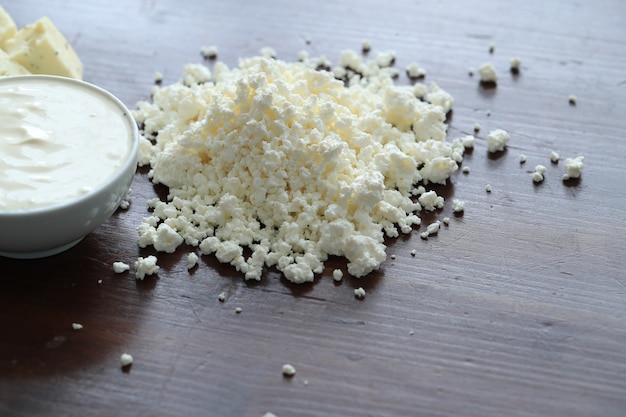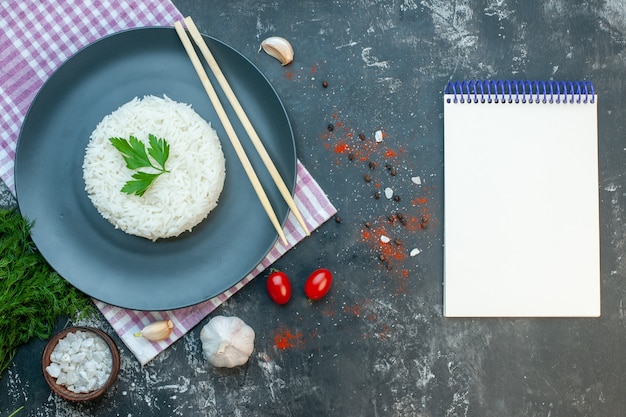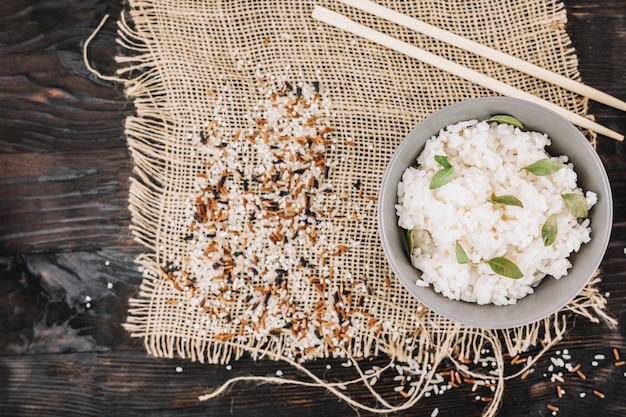Let’s face it, there's nothing quite like a steaming bowl of fluffy jasmine rice. It’s a culinary staple, a comforting side dish, and the perfect blank canvas for countless flavourful creations. But getting it right can be a bit of a challenge. I've been there, wrestling with sticky rice and overcooked disasters. But over time, I've discovered the secrets to cooking jasmine rice perfectly, every single time. And I'm ready to share them with you.
Part 1: The Essence of Jasmine Rice

Before we dive into the cooking process, let's take a moment to appreciate the star of the show: Jasmine rice. Originating in Thailand, this fragrant and slightly sticky rice is a staple in many Southeast Asian cuisines. It’s known for its delicate aroma, soft texture, and ability to soak up delicious sauces and flavors.
What makes jasmine rice special? It’s the unique variety of rice, the distinctive long and slender grains, and the high amylose content that gives it that slightly sticky texture. It's this stickiness that makes it so perfect for shaping into rice balls, molding into sticky rice dishes, and even serving as a base for delicious rice bowls.
Part 2: The Secrets to perfect jasmine rice

So, how long does it take to cook jasmine rice? It’s a simple question with a surprisingly complex answer. The truth is, the cooking time is just one piece of the puzzle. To achieve that perfect fluffy texture, you need to master the entire process.
Understanding the Ratio
The most crucial aspect of cooking jasmine rice is getting the water-to-rice ratio right. Think of it as a delicate balance between too mushy and too dry. I've found that a 1:1.5 ratio works wonders. For every cup of rice, you’ll need 1.5 cups of water. It’s simple, consistent, and reliable.
The Right Pot
Now, let's talk about the pot. It’s not just any old pot; you need the right one to create that perfect rice. A heavy-bottomed pot, like a good old saucepan, is ideal. Why? Because it distributes heat evenly, ensuring your rice cooks evenly and consistently. Avoid using a non-stick pan, as it can make the rice stick and turn into a gooey mess. That's a disaster we want to avoid.
Part 3: The Art of the Cook

Now, let's break down the steps. This is where we unlock the secrets to perfect jasmine rice. Get ready for a culinary adventure!
Step 1: The Rinse
Before you get cooking, give your rice a thorough rinse under cold water. Think of it as a cleansing ritual. This removes excess starch, which is what causes the stickiness that can ruin your rice. Just run the rice under the tap, gently swishing it around with your hand, until the water runs clear. You'll be surprised at the difference this simple step makes.
Step 2: The Soak
Next, we have the soak. It’s a crucial step that ensures the rice grains absorb enough water for perfect cooking. Pour the rinsed rice into a bowl and cover it with fresh water. Let it sit for about 30 minutes. The rice will become plump and slightly translucent, ready for the next stage.
Step 3: The Boil
Now, it’s time to bring the rice and water to a boil. In your trusty heavy-bottomed pot, combine the rinsed and soaked rice with the correct amount of water. Place the pot on the stove over medium-high heat. You'll know it's ready when the water starts bubbling vigorously, creating a symphony of tiny explosions.
Step 4: The Simmer
Here's where the magic happens. Once the water is boiling, reduce the heat to low and cover the pot tightly with a lid. Let the rice simmer for about 15 minutes. Resist the temptation to peek! The rice needs that steam to cook evenly, transforming those grains into a fluffy masterpiece.
Step 5: The Rest
After those 15 minutes, turn off the heat and let the rice rest, covered, for another 5-10 minutes. This is called resting, and it's essential for absorbing the remaining moisture and achieving that light and airy texture. Don’t rush this step. Let the rice continue to steam inside the pot. It's a crucial step to perfection.
Part 4: Fluffing and Serving
Now, for the grand finale. Gently fluff the rice with a fork or a rice paddle. This separates the grains and creates that perfect, airy texture. Be gentle; you don't want to crush the rice. Now, you're ready to serve up your culinary creation.
Don’t Be Afraid to Experiment
Jasmine rice is a versatile canvas, ready for your culinary creations. It pairs perfectly with curries, stir-fries, and noodle dishes. You can even add a dash of flavor to the water while cooking. Try a bay leaf for a subtle aroma, a sprig of rosemary for a hint of earthiness, or a pinch of turmeric for a vibrant color and a subtle warmth.
Part 5: Variations and Alternatives
Looking for a twist? Sometimes, you might crave a different texture or flavor. Here are a few variations and alternatives to explore:
Brown Jasmine Rice
For a healthier and nuttier option, try brown jasmine rice. It has a slightly chewier texture and a deeper, earthier flavor. The cooking time is a bit longer, so be sure to check the package instructions.
Coconut Jasmine Rice
Indulge in a touch of tropical paradise with coconut jasmine rice. Simply add a splash of coconut milk to the water during cooking. It gives the rice a creamy and fragrant flavor, perfect for Thai dishes.
Spicy Jasmine Rice
If you prefer a kick, add a pinch of red pepper flakes or a small piece of chili pepper to the water while cooking. It’ll give your rice a subtle and satisfying heat.
Part 6: Tips and Tricks from the Kitchen
Here are a few more tips and tricks I've learned over the years:
- Use a good quality rice: The quality of your rice makes a big difference. Choose a reputable brand and look for long, slender grains with a pearly white colour. It’s worth the investment for that extra deliciousness.
- Don’t overcook: Overcooked rice is a sticky mess. Stick to the recommended cooking times and don’t be tempted to keep the heat on for longer.
- Let the rice rest: It’s crucial for achieving that fluffy texture. Don’t skip this step! Let the rice continue to steam inside the pot.
- Store properly: Once cooked, store leftover rice in an airtight container in the fridge for up to 3 days. You can reheat it in the microwave or on the stovetop.
- Experiment with flavour: Don't be afraid to get creative and add a pinch of your favorite spices or herbs to the water during cooking. It’s a simple way to elevate your rice game.
Part 7: Frequently Asked Questions
FAQs
| Question | Answer |
|---|---|
| Can I cook jasmine rice in a rice cooker? | Absolutely! Rice cookers are fantastic for cooking jasmine rice. They take the guesswork out of the process and ensure your rice is cooked perfectly every time. Just follow the manufacturer's instructions for the best results. |
| What if my rice is too sticky? | This usually means you’ve used too much water or overcooked the rice. Try using a 1:1.25 ratio of water to rice next time and keep a close eye on the cooking time. |
| What if my rice is too dry? | You might have used too little water. Next time, add a bit more water and check the rice to see if it needs more time to cook. |
| Can I freeze cooked jasmine rice? | It's not recommended to freeze cooked jasmine rice, as it can become mushy when thawed. It’s best to use it fresh or store it in the fridge for up to 3 days. |
| How can I tell if my rice is cooked? | When the rice is cooked, the grains will be tender and opaque. The water should have been absorbed, and you should see tiny steam holes on the surface. You can test it by pressing a grain between your fingers. It should be soft but not mushy. |
Part 8: The Journey to Perfect Rice
Cooking jasmine rice is a journey, a culinary adventure. It's about discovering those small details that make a big difference. It’s about learning to trust your instincts and adapt to the nuances of your kitchen and your ingredients. Over time, you'll develop a sense of how the rice should feel, how it should smell, and how long it needs to cook. It's a skill that grows with each pot of rice you cook.
Part 9: A Culinary Transformation
I remember when I first started cooking jasmine rice. I thought it was all about just boiling it up and calling it a day. I was so wrong! I'd end up with a sticky, clumpy mess, a culinary disaster that stuck to the bottom of the pot and turned into a burnt mess. But then, I discovered the secrets of rinsing, soaking, and resting the rice. It was a game-changer! My rice became light, fluffy, and absolutely delicious. It was like a culinary transformation, a magical moment of discovery.
Part 10: Conclusion
Now, you have the knowledge and the skills to cook perfect jasmine rice. It’s a simple yet rewarding process, a journey of culinary exploration. So, the next time you're preparing a meal, don't forget the rice! It’s a key element, adding a touch of magic to your culinary creations. Go forth and cook with confidence! You've got this.
Everyone is watching

Corn on the Cob: The Ultimate Guide to Perfectly Cooked Ears
Healthy MealsAh, corn on the cob. Just the name evokes images of sunny days, barbecues, and that sweet, juicy flavour that ...

Perfect Pork Roast Oven Cooking Time: A Guide to Delicious Results
Healthy MealsThere's something truly satisfying about a perfectly roasted pork. The aroma alone is enough to make your mout...

Scallops: The Ultimate Guide to Perfect Cooking
Healthy MealsAh, scallops. Those delicate, sweet, and utterly delicious morsels of the sea. They hold a special place in my...

Spaghetti Squash: The Ultimate Guide to Cooking and Serving
Healthy MealsRemember that time you saw spaghetti squash at the supermarket, looking all bumpy and strange, and thought, "W...

Ham Cooking Time: How Long to Bake, Smoke, or Boil a Delicious Ham
Healthy MealsAh, ham. It's a classic, isn't it? A real crowd-pleaser, especially around holidays. And when done right, it'...
